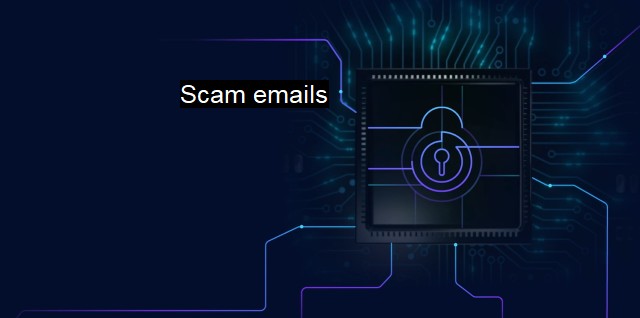What are Scam emails?
Scam Emails: A Grave Concern in the Modern Cybersecurity Landscape - How Antivirus Can Halt Fraudulent Email Attacks
Scam emails, also known as Phishing emails, fall into the category of cybercrimes that seek to utilize disguises in order to trick unsuspecting users into divulging sensitive information. This fraudulent act doesn't only threaten individual securities but also organizations, hence the pressing need for comprehensive cybersecurity measures such as advanced antivirus software. The rise and advancement in technology and internet use correlate with an increase in scam emails prevalence, acuteness, sophistication, and damaging potential.Scam emails leverage social engineering tactics, using seemingly genuine and trustworthy email headers, body content, and attachment. The primary goal is to dupe the recipients into believing that the emails came from renowned banks, governmental organizations, corporates, or any other entities that require, store, and manage users sensitive data. Recipients are therefore lured into leaking details such as usernames, passwords, banks ad corporate account details, private keys, and other important data to the person on the other end of such emails in the guise of a trusted brand.
One common characteristic of scam emails is their eliciting sense of urgency or fear, and in some cases, they capitalize on auspicious offers and opportunities that are too good to be true. In the urgency or fear scenario, scammers play with high emotions such as telling a recipient that they have unpaid taxes, there has been suspicious activity on their account, or their account may be closed if not verified immediately. In these cases, a link is often included to redirect the victims to malevolent and disguised sites. Likewise, the rosy and auspicious offers bait victims by luring them to reveal their personal data in the name of claiming prizes or advantageously investing or trading under privileged environments.
More technically elaborate scams involve the incorporation of malicious software or malware hidden typically in email attachments. The malware comes into operation when the recipient opens the document, and the downloaded malware lurks into the system's network, enabling the scammer to access or secretly monitor the victim’s entire computer system over time.
To mitigate these risks, there's a crucial need to incorporate cybersecurity measures such as antivirus software. The antivirus software offers comprehensive protection against threats bestowed by scam emails. It scans incoming and stored emails for suspicious links and attachments, and neutralize them before they reach the recipient's inbox. The antivirus software also secures stored data from the possible invasion by malware that might have been unknowingly downloaded.
Advanced antivirus applications supplement technical measures with educational resources that enlighten users about the nature of scam emails. They provide constant notifications about what to look for and how to act when a suspicious email is detected.
In an organizational context too, having robust cybersecurity measures against scam emails is key. Businesses should install high-quality antivirus systems network-wide, and regularly update them for the most recent threats. Training staff on cybersecurity, how to pick out fraudulent emails, and what to do or who to report to when they receive such emails are also imperative. Strict spam filter settings and enabling the two-step verification features can further dilute the risks.
Given the complexity and sophistication of modern scam emails, merely relying on individual caution is not enough. Proactive implementation and enforcement of advanced cybersecurity measures such as use of updated antivirus software, network firewalls, email filters, and most importantly, cybersecurity education by all potential victims offer the best defense. Scam emails are indeed an intricate issue demanding concerted efforts, both personally and by organizations, to keep the sensitive data safe and mitigate the damages substantially.

Scam emails FAQs
What are scam emails?
Scam emails are fraudulent messages sent by cybercriminals to trick individuals into providing personal information, financial details, or login credentials. These emails usually appear to be legitimate and convincing, but they are designed to deceive and steal information from their targets.How can I identify a scam email?
Scam emails often contain spelling or grammatical errors, urgent requests for personal information, suspicious URLs or attachments, or unexpected email addresses. They may also use scare tactics or impersonate well-known companies or institutions to gain your trust. Be cautious and scrutinize every email that asks for private information.What should I do if I receive a scam email?
If you receive a scam email, do not reply or click any links or attachments. Instead, mark it as spam or phishing and delete it immediately. Alert your IT department, antivirus provider, or cybersecurity professional so they can investigate further and protect your system.How can I prevent scam emails from reaching me?
You can prevent scam emails from reaching you by using strong spam filters, keeping your antivirus software up-to-date, and being cautious about giving out personal information online. Additionally, educate yourself on common scams and stay informed about emerging threats to better recognize and avoid them.| | A | | | B | | | C | | | D | | | E | | | F | | | G | | | H | | | I | | | J | | | K | | | L | | | M | |
| | N | | | O | | | P | | | Q | | | R | | | S | | | T | | | U | | | V | | | W | | | X | | | Y | | | Z | |
| | 1 | | | 2 | | | 3 | | | 4 | | | 7 | | | 8 | | |||||||